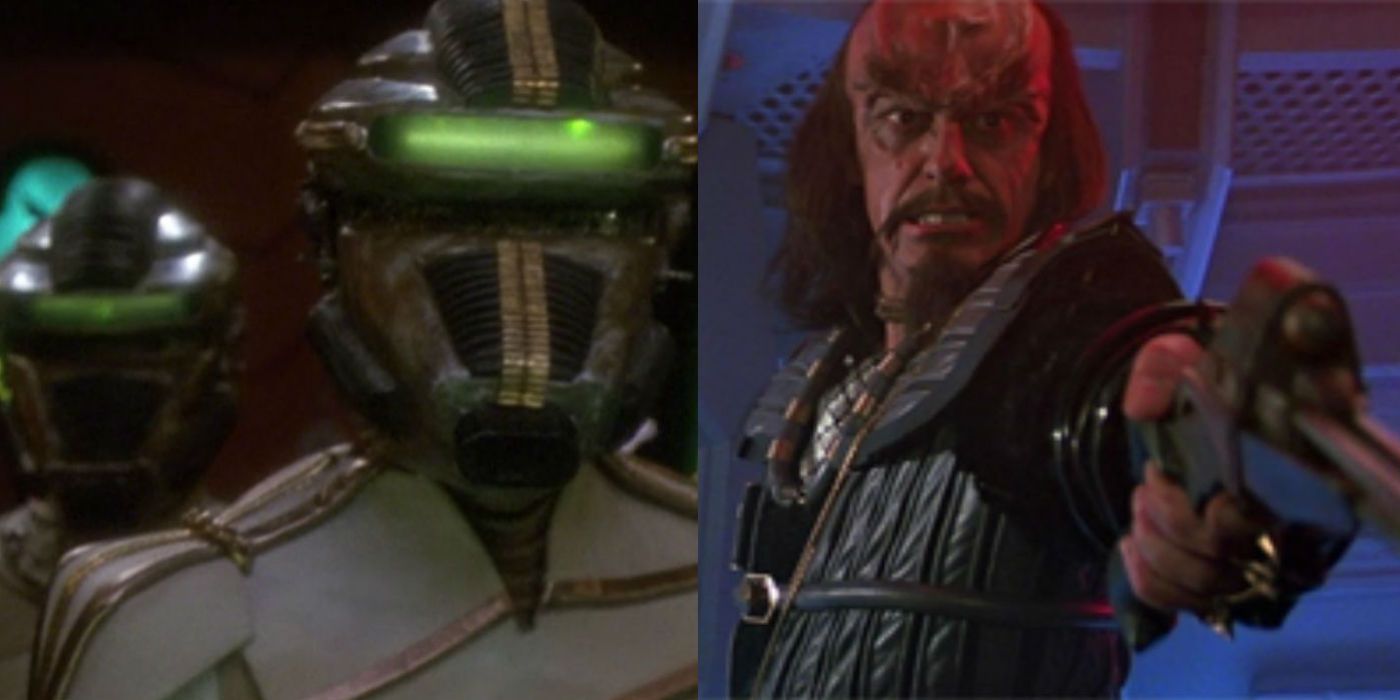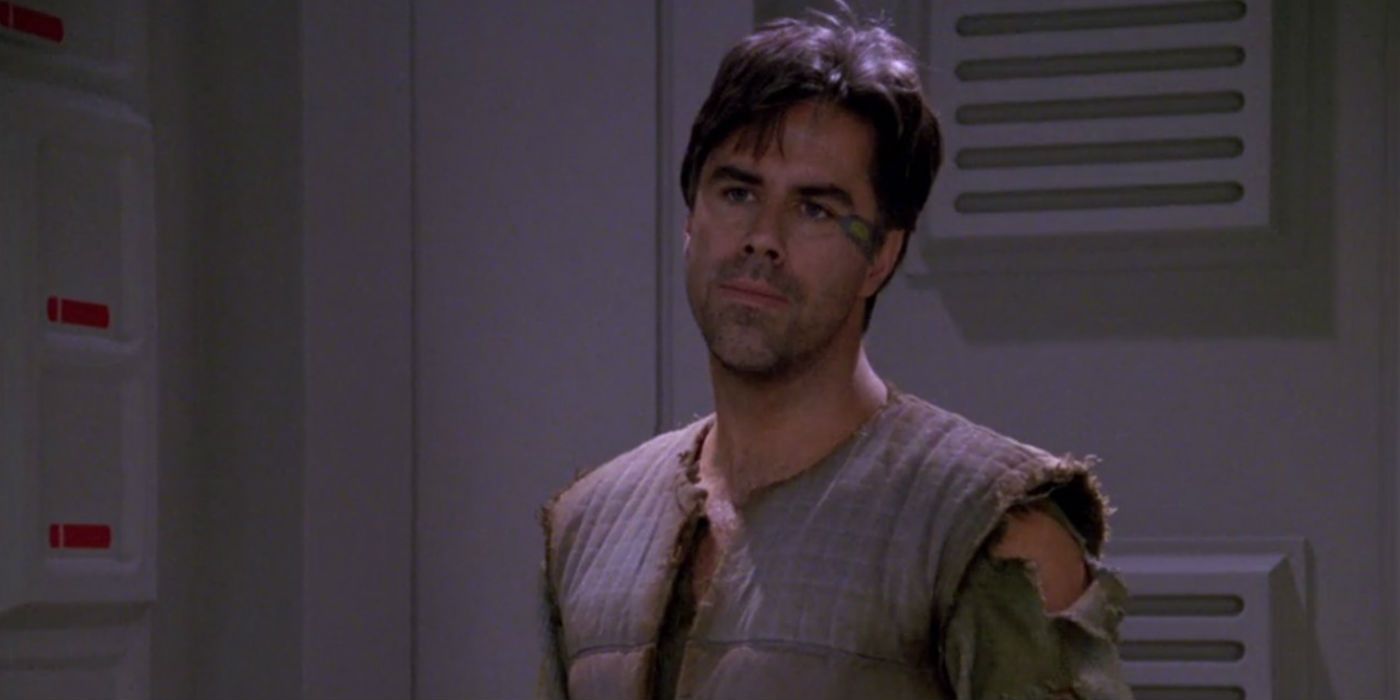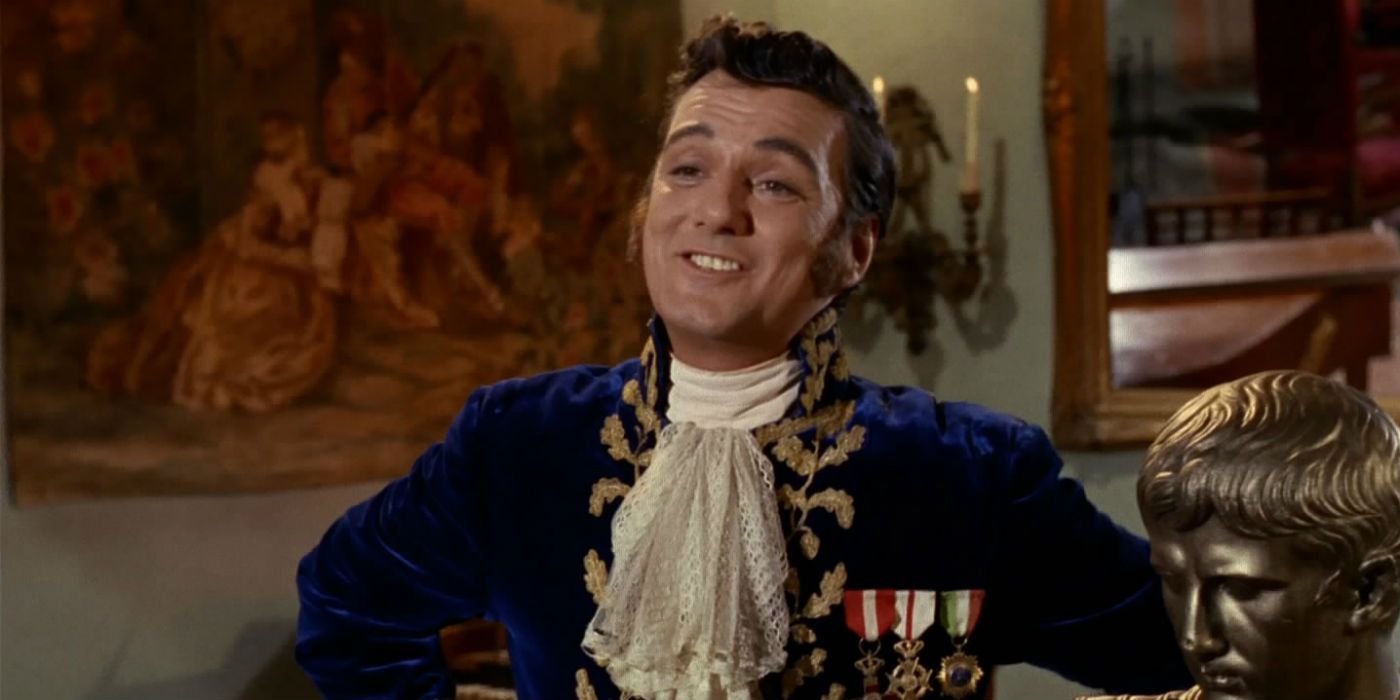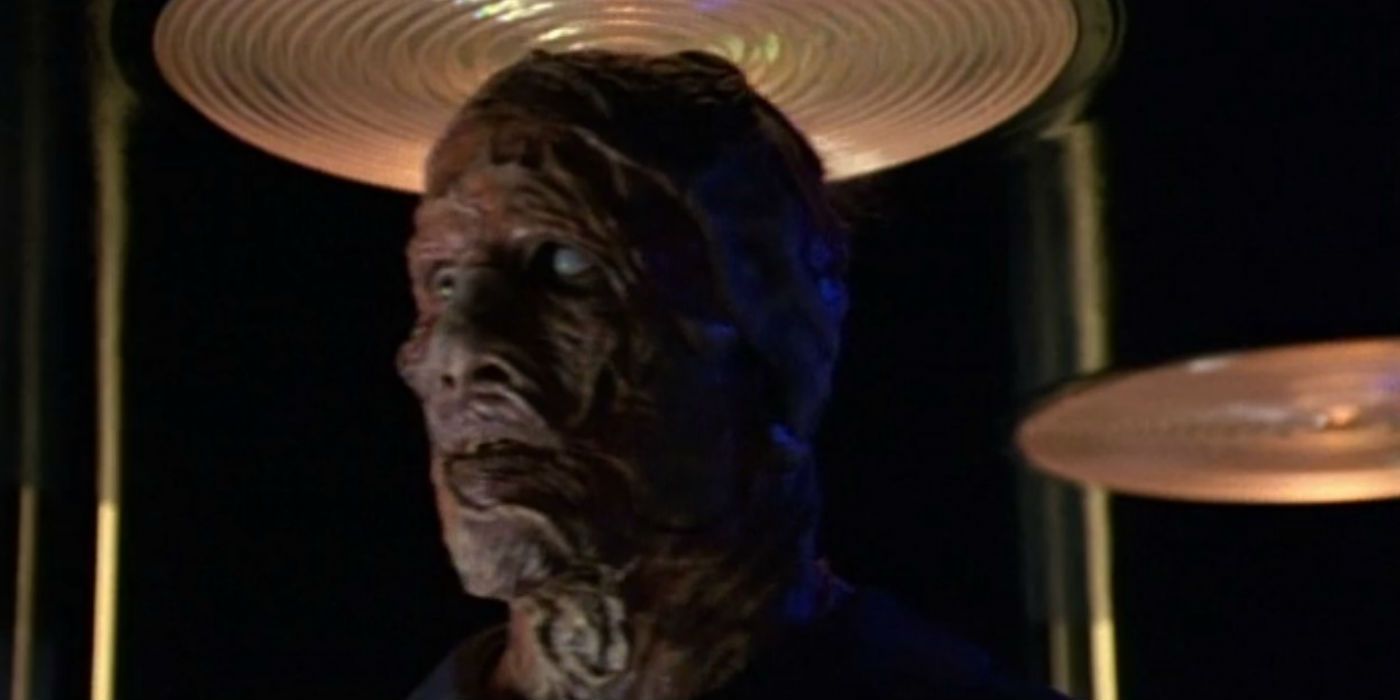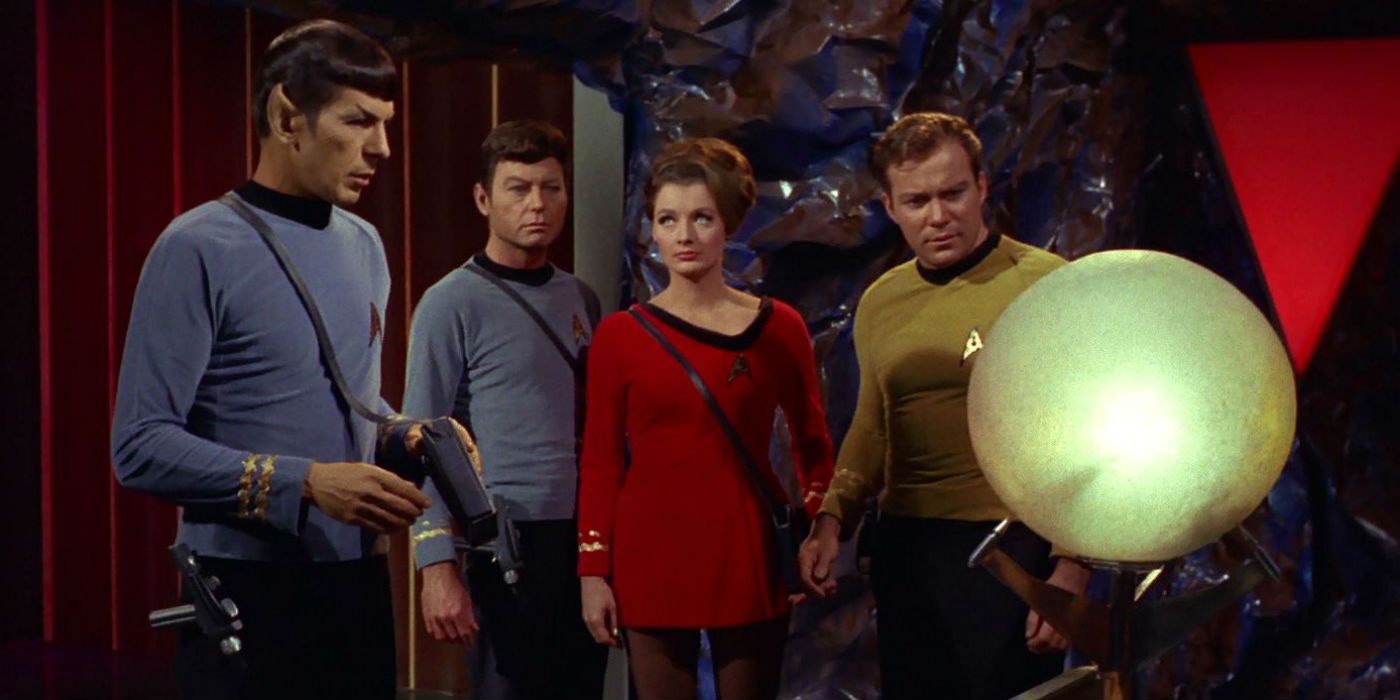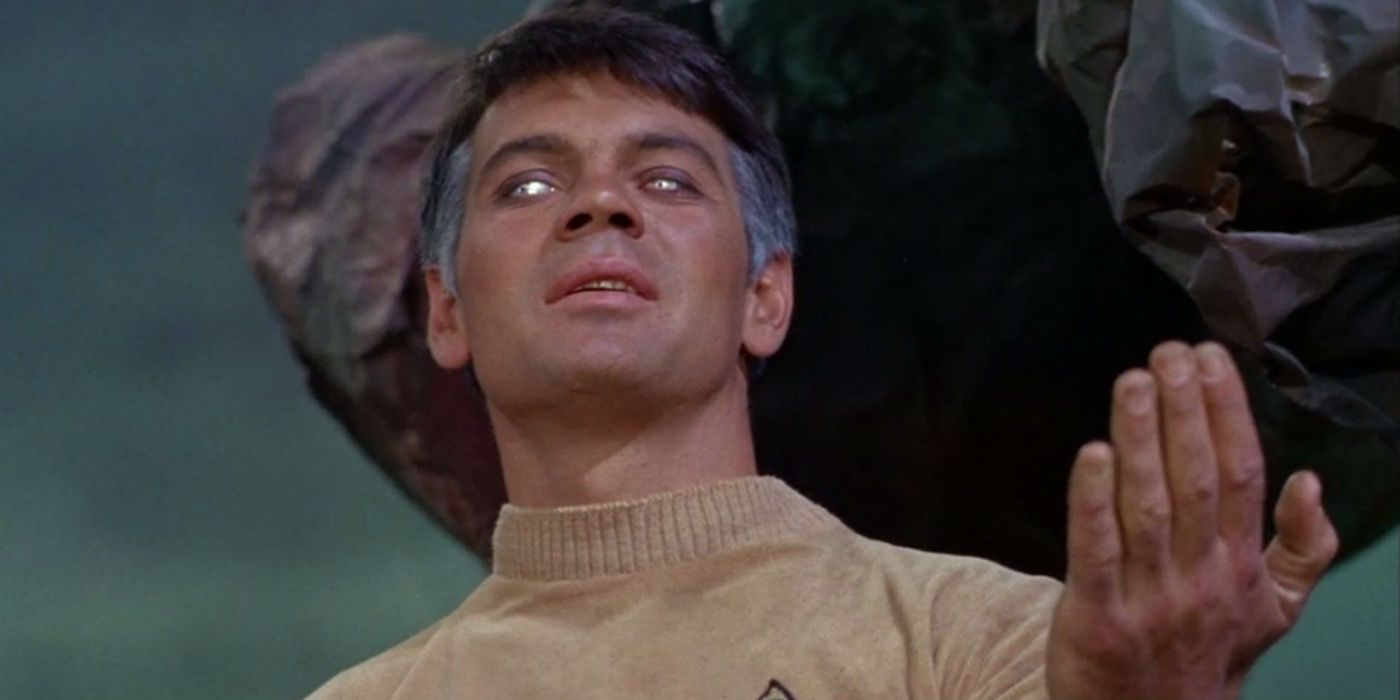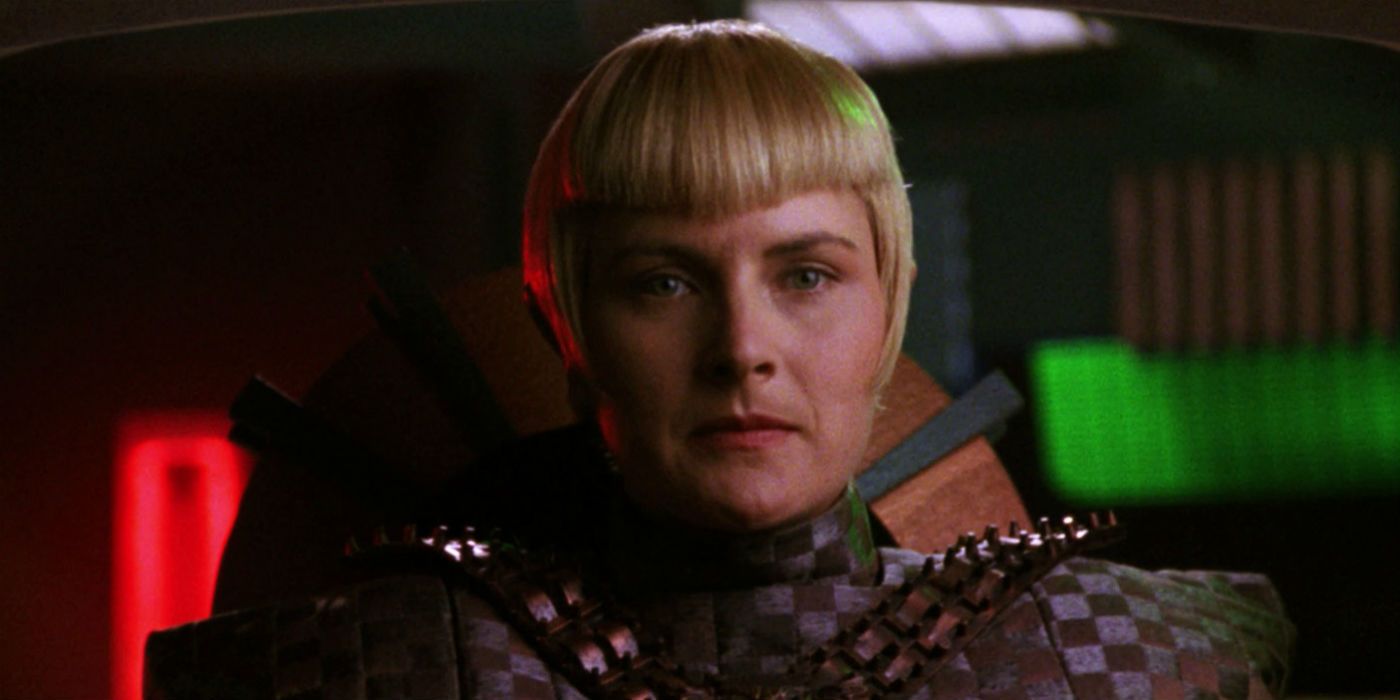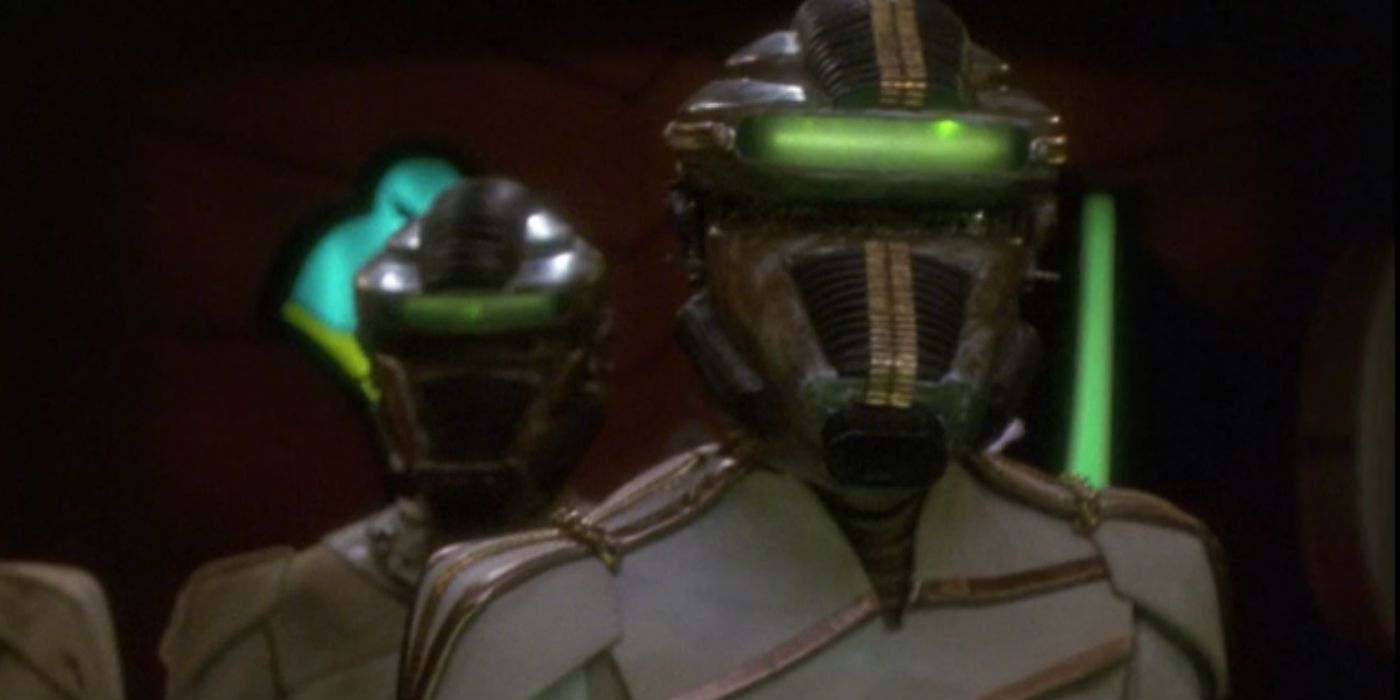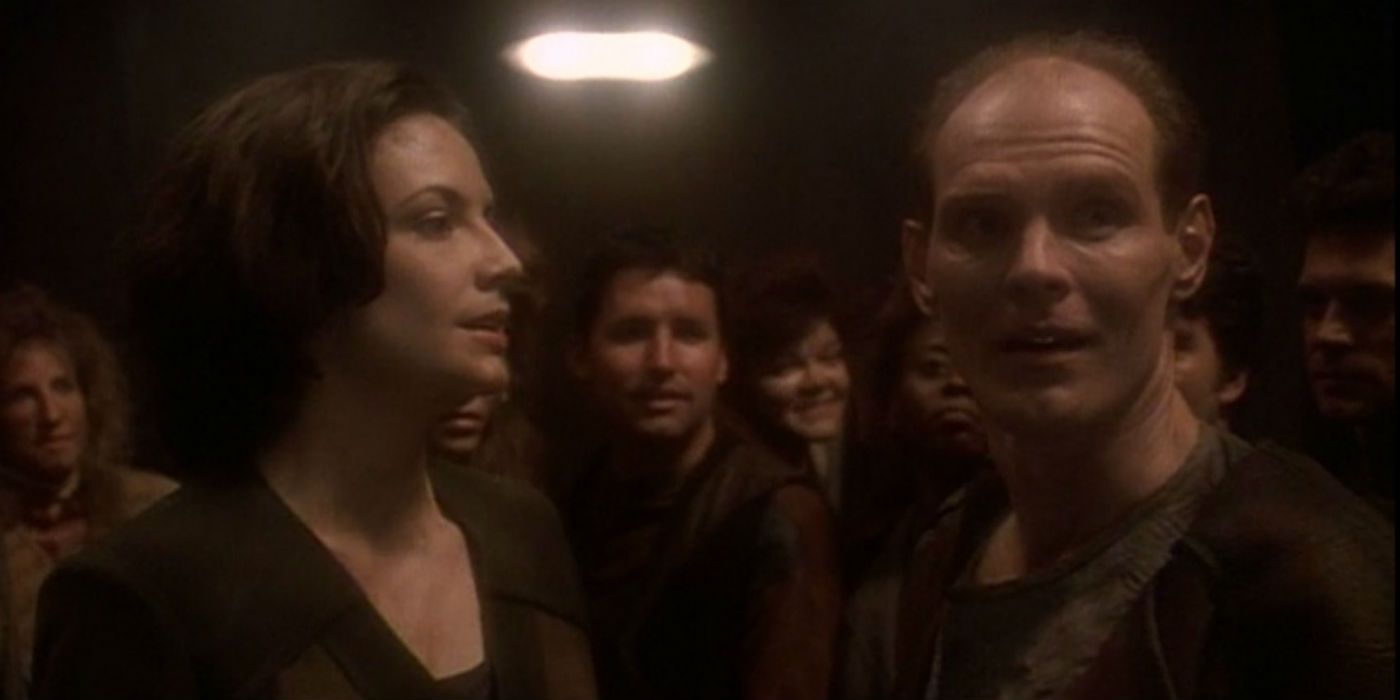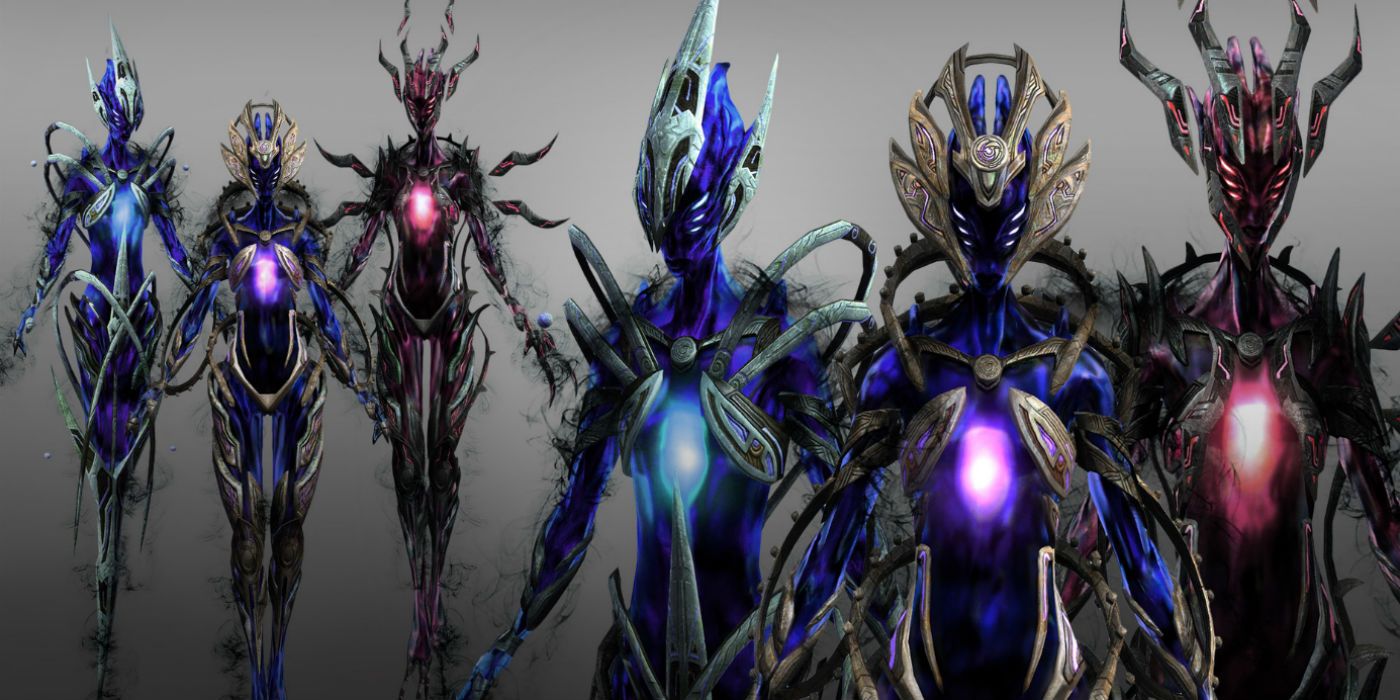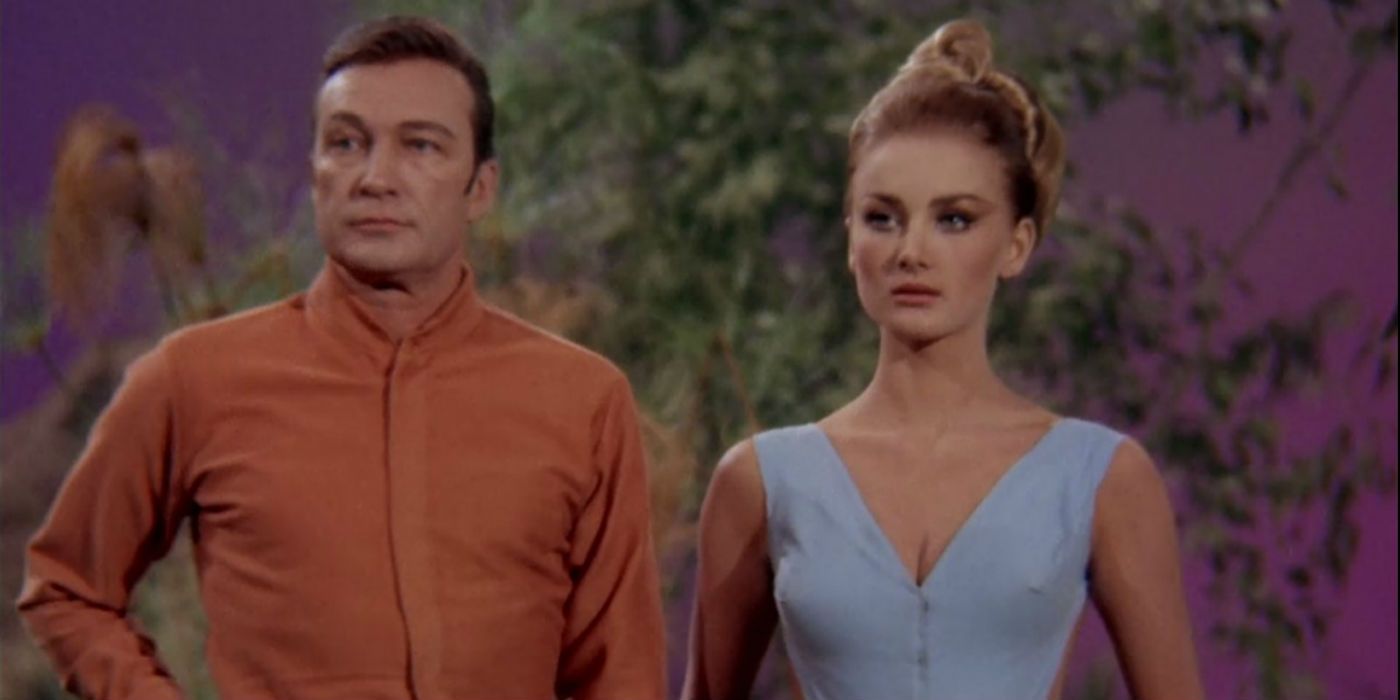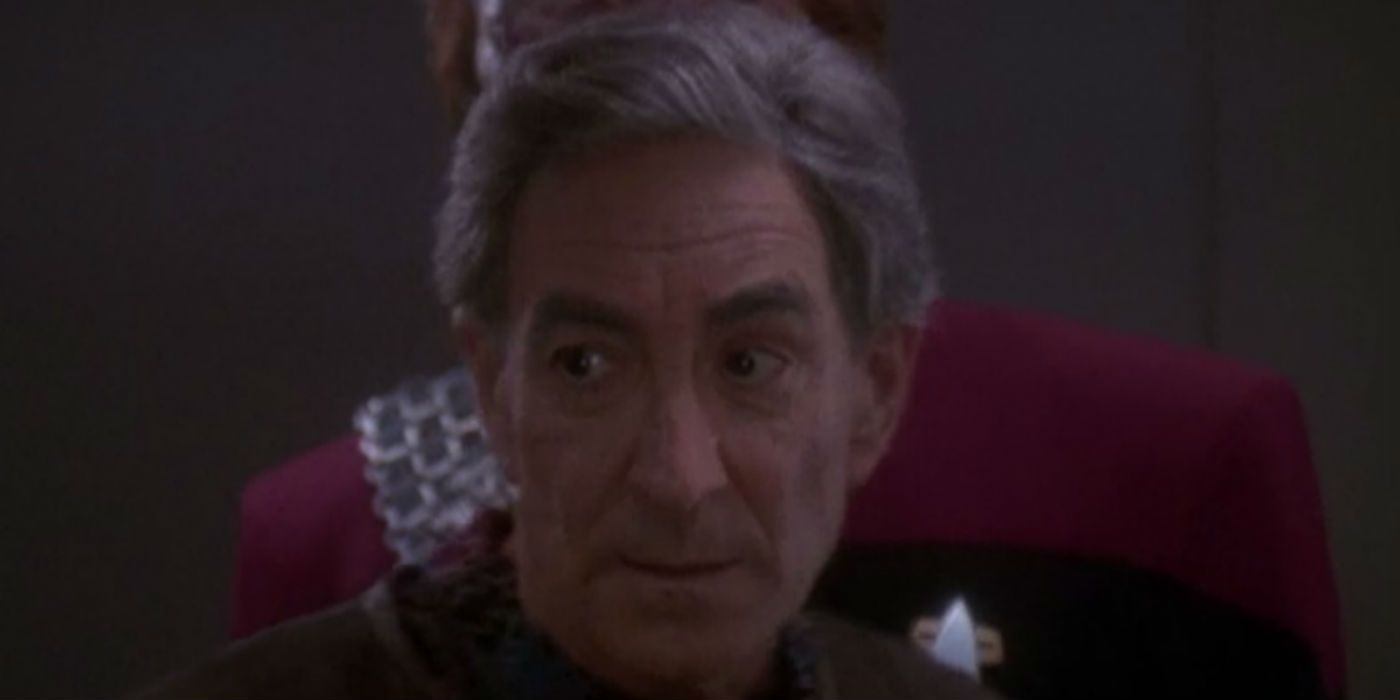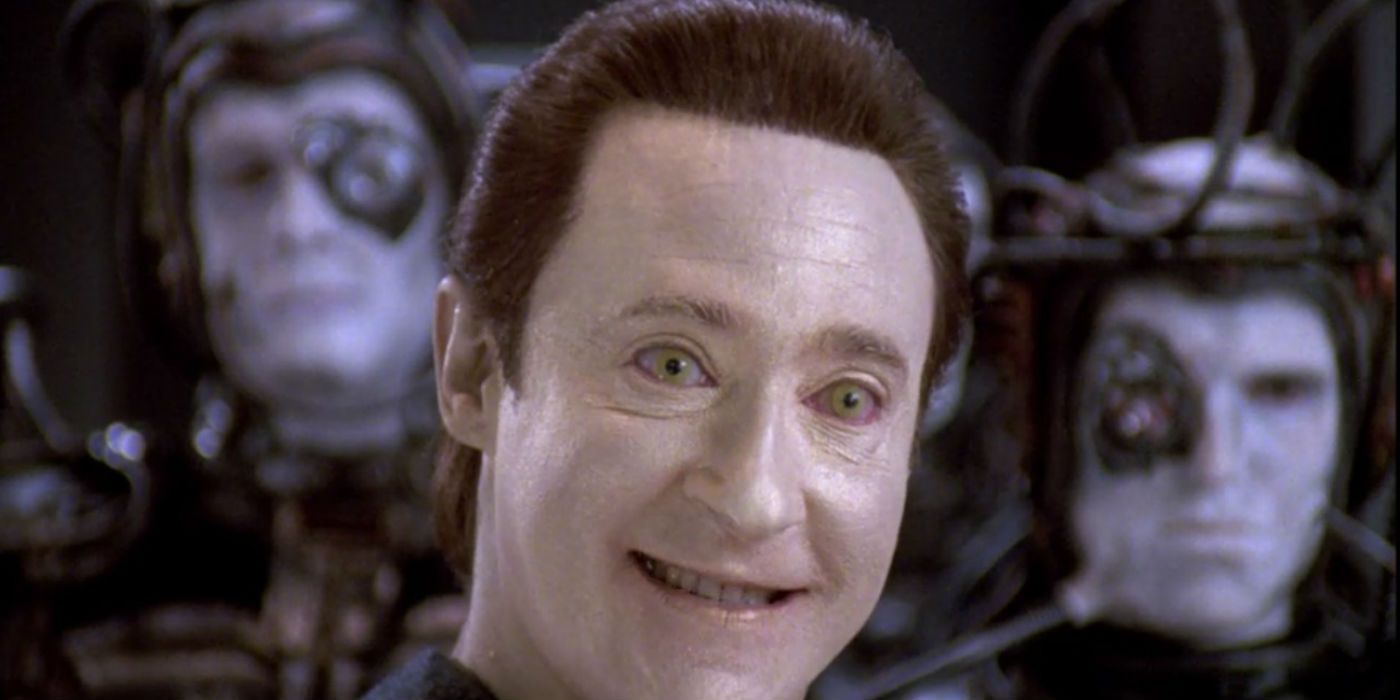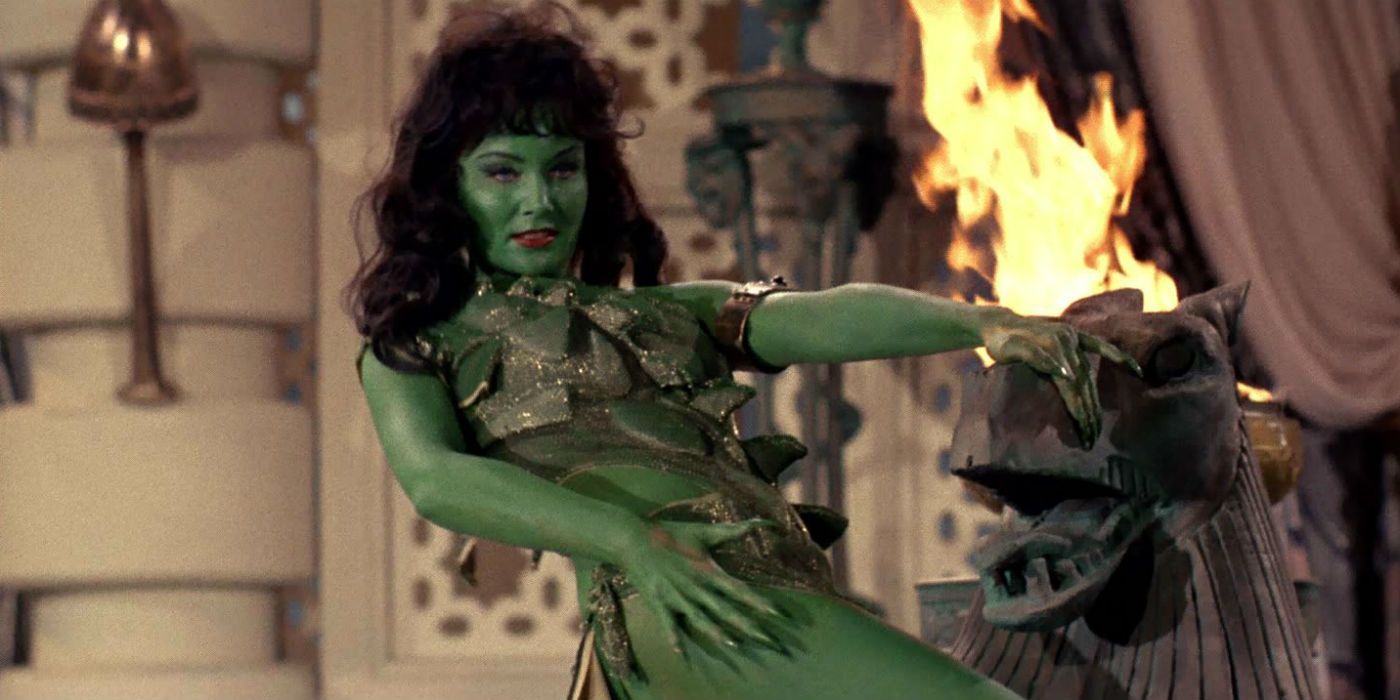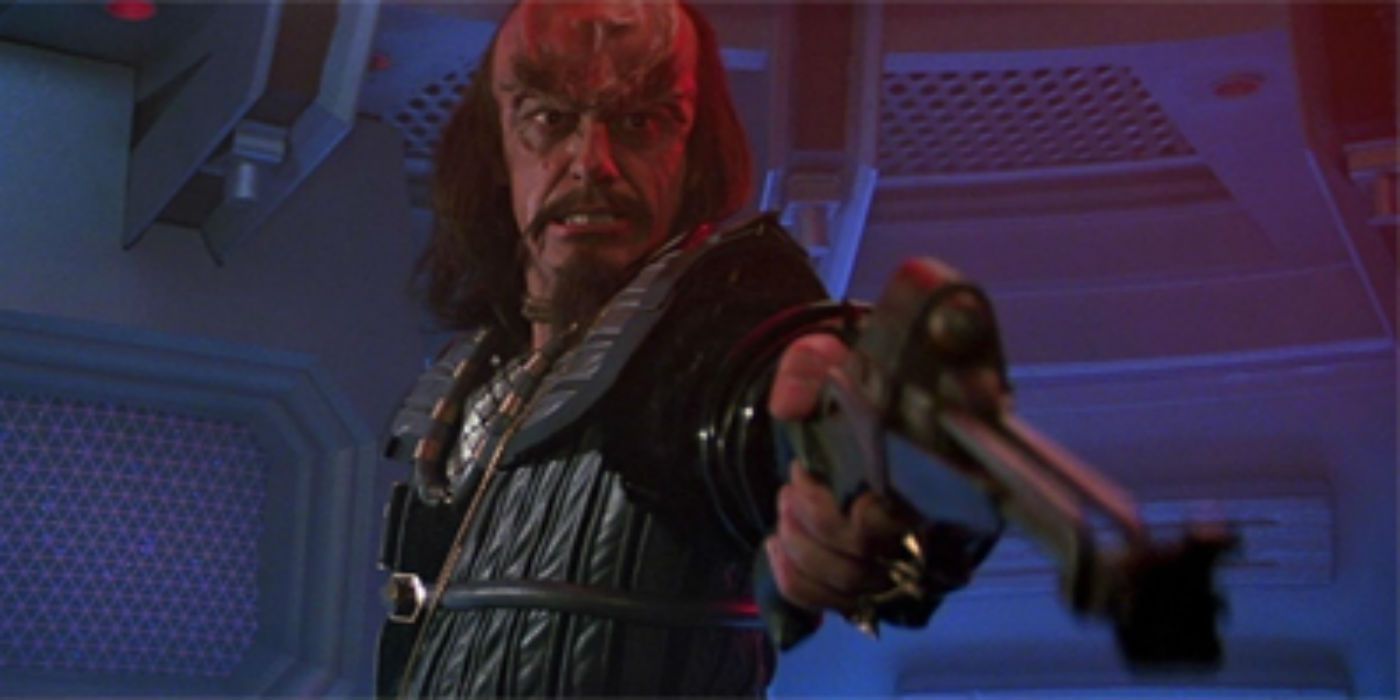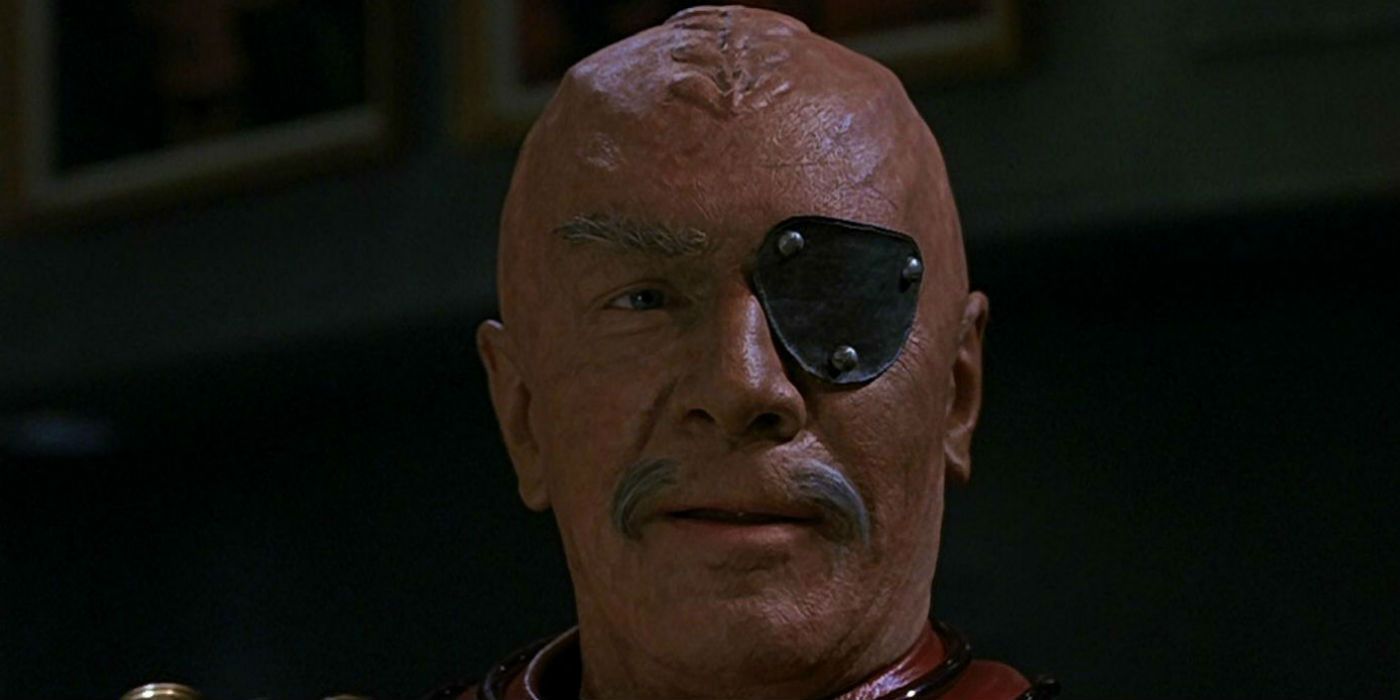Star Trek has endured through decades. It has survived the Cold War, lawsuits, studio changes, poor management, and the conflated egos of many of the people involved in its production. In one form or another, it has survived for over fifty years. That's thousands of hours of television, and it's on top of the thirteen produced movies to date. There's enough tie-in novels to fill libraries, and enough merchandise to fill the Staten Island dump twice.
In all those years and with all those stories told, there are countless villains, and in the massive catalogue of memorable Star Trek villains, you see the same names pop-up: Khan, Gul Dukat, Rick Berman, the Klingons, the Romulans, The Dominion, the Borg, and repeated cancellations. These villains have started interstellar wars, killed beloved characters, traveled through time, and wore bizarre uniforms with thick shoulder pads.
Naturally, in the last fifty years, with all of the material available, some great villains have been overlooked. Sometimes it was because of a change in plans, missed opportunities, or good old fashioned bad luck. Regardless, there are some names that deserve more recognition than they’ve received. To that end, we’ve devised a list of the 15 Most Underrated Star Trek Villains, in an effort to give these baddies the love they've long deserved.
15. Roga Danar
Try and overlook the fact that Danar looks like Kevin Nealon or the fact that the episode he appears in, “The Hunted,” is an absolute bore. The germ of the idea here is a great one—the poor way in which we treat our veterans. The Angosians are a peaceful species, having wiped out war on their planet thanks to their genetically engineered super soldiers. Unfortunately, no effort was put into deprogramming them of their violent tendencies; it was simply cheaper to throw them all in a penal colony.
Danar was the best soldier of them all, and he messed with the entire crew of the Enterprise before being recaptured. Considering his life signs were undetectable on sensors, and he could take punishment better than most masochists, Danar had the makings to be a classic Trek villain. His history was complicated, his motives were understandable, and he had complexity to him. It was just never handled the way it should have been.
14. Trelane
Trelane is like a toddler with a machine gun. He is nigh invincible, has god-like powers, and is very immature. Clearly a proto version of Q, who we would meet decades later in The Next Generation, Trelane wanted people to do what he said. When they didn’t, he’d do something terrible to them. Sometimes, he’s just do something terrible to them out of capricious boredom. Instead of being a toddler with a machine gun, he’s more like Caligula with a nuke. Now, imagine taking that a little more literally.
Captain Kirk, Spock, and Doctor McCoy were unable to overcome Trelane. Instead, the villain’s parents showed up to chide the boy and let Kirk and co. go home. Not even Kirk was able to save the day—he needed someone else to do it for him.
13. The Vidiians
Star Trek doesn’t do horror very well. Star Trek: Voyager doesn’t really do anything well. Combine the two, and you’re most likely going to get a seven-layer cake of who-gives-a-damn. For once, however, we got the Vidiians. Their race is sick with something called the Phage, which eats away at them from the inside and is adaptive to every known treatment.
The Vidiians who didn’t kill themselves from the pain became pirates—only they go about attacking ships to steal people's skin, marrow, and organs to use for themselves. The Phage eventually will wear out those new pieces, so the Vidiians constantly have to go back out to disfigure and kill more people just so they can stay alive a little while longer.
The best example for how awesome/awful they are is this: a Vidiian named Sulan captured B’lenna Torres and some Gold Shirts. In order to appear more appealing to her, Sulan ripped the face off of the best looking Gold Shirt and wore it like a mask! Like he was Leatherface! How awesome/depraved is that?
12. Species from Return to Tomorrow
Aliens from a dead civilization lost their corporeal form and were living as energy stuck inside a large sphere. These aliens were advanced enough to be considered gods given their technological and physical abilities, and they may have even seeded Earth and Vulcan with life. Appearing benevolent, they made a deal to temporarily borrow the bodies of Kirk, Spock, and some crew members. Naturally, the aliens were lying, and they wanted to keep the bodies and take over the ship.
Other than the technological advances, they also had psychic and telepathic abilities that they used to torture Doctor McCoy (no doubt feeding him visions of a nightmare world without Saurian brandy). In the end, the crew of the Enterprise won the day because Sargon, the leader of the aliens, couldn’t go through with their evil plans. Now imagine what would’ve happened if the remaining aliens managed to survive.
11. Gary Mitchell
Sometimes, your career just doesn’t go the way you wanted. Captain Kirk and Gary Mitchell went to the academy together, but twenty years later, he’s still much further down the food chain than Kirk. He isn’t nearly as important. Then, an accident turns Gary into a god (note: this happens in space with shocking regularity). Well, it was too much too soon for him, and he became vicious and cruel with his newfound powers, killing fellow crew members, altering planets on a whim, and spelling Kirk’s name wrong.
Trek loves to have its characters face off against gods, but Gary Mitchell was a little different. He was human first, and all those human flaws were simply dialed up to eleven. His chilling silver eyes that looked down at everyone added to the sense of superiority he felt, but also to the idea that he was putting on an air. Finally, he was as powerful and important as he always wanted to be.
He’s underrated because he combined the powers of a god with the frailties of a human, though he remained a character we could identify with through it all.
10. Sela
Sela should be a much more beloved villain in Trek. The hallmarks are there; she’s cruel, she’s calm with an underlying anger that is dying to erupt, and she’s brilliant. And the best part is, it’s a personal vendetta.
The TNG crew don’t want to fight Sela because she’s Tasha Yar’s daughter, and she hates humanity because, well, she’s Tasha Yar’s daughter. And that’s part of the reason she’s underrated. The story gets watered down to that one fact: she’s Tasha’s daughter. That’s the shtick. Everyone forgets all the Machiavellian plans and the millions of lives lost because of Sela’s intentional actions. She engineered and escalated the Klingon Civil War. She almost successfully invaded Vulcan. It took the combined efforts of Picard, Data, and Spock to stop her (along with an entire fleet). Sela simply doesn’t get the credit she deserves.
9. The Breen
Before meeting the Breen, we were told some anecdotes about them: “No one has seen a Breen and lived,” “Never turn your back on a Breen.” Solid, quiet people in refrigeration suits with an incomprehensible language, they're scary despite the somewhat silly design. Little is ever revealed about them—we never even see what’s under the helmet—other than they have a modestly sized military and that they have a fixation on Earth and humanity. Namely, they want us either enslaved or destroyed.
Even after they joined the Dominion, they were never given much focus except for one major event: they successfully attacked Earth, nearly destroying San Francisco (where Starfleet is based). General Martok was impressed, saying that even his people had never even dared to attack Earth, let alone do it successfully.
Unfortunately, budget problems kept us from seeing the attack itself—we only got a quick shot of the aftermath—but the scene plays uncomfortably real post-9/11. Regardless of the connection, the Breen are underrated for the attack and for the fact that it impressed a Klingon. Not to stereotype, but the only things that impress them are multi-day drunken binges and massacres. So, there’s that.
8. The Maquis
The Maquis is a terrorist organization comprised of Federation citizens who felt betrayed by the Federation-Cardassian treaty that would force them to leave their homes. So, they left their homes to go fight the Cardassians. Look, it’s best not to think too hard about their origins.
Unfortunately, like many ideas in Star Trek, there wasn’t enough of a budget to explore the Maquis’ war against the Cardassians very much. The entire faction was even wiped out in a horrifying massacre that took place entirely off-screen.
The very existence of the Maquis is so antithetical to Gene Roddenberry’s view of the Federation and humanity’s future that it’s just cool that this story even made it to screen. They added a sense of grit and imperfection to the Federation which was so often portrayed as saintly. It also offered the moral dilemma of the Federation having to pick sides; the enemy you hate but have to deal with, or the neighbor who was a friend but is now an enemy. It was complex stuff that, sadly, never lived up to its potential. Just like Voyager and Enterprise.
7. The Iconians
The Iconians are a strange one in Star Trek. Referenced a handful of times, they are a species that had a vast empire which fell 200,000 years ago. However, their legacy has endured through the millennia. Their technology was so great that they had outposts in all four quadrants of the Milky Way galaxy, and it was always rumored that some managed to survive. The thread was never pulled on or tied up in the regular Star Trek universe, but it was explored in the MMORPG Star Trek Online.
Through several missions, we learn how the Iconians survived, what they were doing, and how to fight them. Living up to their “Demons of Air and Darkness” moniker, these energy-based lifeforms were incredibly powerful and commanded millions of slaves from a variety of species that they genetically altered to reflect the Iconian aesthetic.
It took the major powers of all four quadrants in the galaxy to stop them. While the story itself was middling, the scope of it along with the sense of detail and stakes are a great example of how to take an underrated villain and make them important.
6. The Kelvans
The Kelvans were a villain-of-the-week that should’ve been more. They’re the anti-Federation. Hell, their leader, Rojan, even looks like a discount James T. Kirk! The Kelvan Empire is an advanced species which seeks to colonize rather than explore. They used a multi-purpose weapon on their belts that could bend physics on a whim; they literally turned people into dodecahedron-shaped crackers.
Since the concept of all this was too immense, Gene Roddenberry and Gene Coon had the episode watered down a bit to make it simpler on the writers and the audience. However, some dark stuff was left dangling in the final cut of the episode. The Kelvan world is dying, so they sent out generational ships to different parts of the galaxy. That means there are other Kelvans out there, and not all of them can be as flexible as the ones Kirk dealt with (with reason, seduction, and alcohol as one does in Star Trek). It’s a loose thread that the franchise has never pulled on, and because of the fairly light tone of the episode, the Kelvans have been long forgotten.
5. Arne Darvin
When you think of Klingons, you think of brutish thugs/leather fetishists. They’re large and loud and angry. And then you have Arne Darvin. He’s short and lanky. He’s definitely no warrior. But, surgically alter him to look like a human, and you’ve got yourself a good spy. If someone says Klingons are dumb, point out Arne. He was a clever spy and saboteur, infiltrating the Federation agricultural efforts, and nearly destroying an entire colony’s food supply (if not for the Tribbles. Tribbles!)
Even though he didn’t succeed, Darvin plotted revenge. He infiltrated the Federation again (!) and managed to go back in time. He very nearly succeeded in alerting history by killing James T. Kirk. He has only stopped thanks to meddling teenagers the DS9 crew, who followed him back to the 22nd century. And, look, nobody beats Ben Sisko, so the odds were against Arne anyway.
Although never followed up with, Darvin was a unique Klingon who focused on brains rather than brawn, and—come on—the guy almost changed all of history. You have to give him credit for that.
4. Lore
Lore is an outright tragedy, because the ingredients were all there. Brent Spiner played Data’s evil twin with gleaming pathos and potent amorality. Lore’s positronic brain allows him to look at things in a purely logical way based on his own experiences. In that way, he’s not all that evil; he’s just following what he believes is right. Plus, he has that improved Android strength nearing invulnerability. He’d probably be more often remembered if the writers produced episodes worthy of the character’s potential.
Showing up only three times in the entirety of The Next Generation, Lore’s appearances were at best “okay,” and at worst, well, was the aptly titled episode “Descent.”
Therein, Lore found a group of drones led by Hugh (the Wesley Crusher of the Borg) who had been disconnected from the hive mind. He then decided to become a Mengele-inspired cult leader who experimented on his Borg followers. For some reason, he came to resent all non-Android life and built this small militia so he could…do…something that was never really explained.
3. The Orion Syndicate
The Orions have a weird history in Trek. The Syndicate is a combination of the mafia and the black market. They’ve been around since The Original Series and have been explored in the outer edges of some episodes throughout the franchise. Chief O’Brien investigated a small low-level gang in Deep Space Nine, and the crew reacted to the occasional sabotage, setback, or murder attempt by someone hired by or a member of the Orion Syndicate, who we would never see. They’re one of Trek’s last big mysteries despite being this galaxy-wide operation, and that’s what makes them so cool. We still know nothing about them other than the fact that they can virtually get anyone killed, and they have nearly unlimited resources.
The same goes for the Orion people, too. None of the Star Trek series explored their culture except for one: the (brilliant) Star Trek Continues fan-series.
2. Kruge
If you can look past the fact that it’s just Christopher Lloyd wearing Play-Doh on his head and that The Search for Spock isn’t all that great, you’ll see that Kruge is actually an extremely overlooked villain considering all he managed to accomplish. So determined he was with getting information on Genesis (the terraforming technology, not the band) that he murdered his wife to keep the data from being leaked.
Khan had a line in Star Trek II—“I’ve done far worse than kill you—I’ve hurt you”—and Kruge actually surpassed Khan. Kruge murdered Kirk’s son David and then put the captain in a situation where he had no choice but to destroy the Enterprise, stranding them on the dying Genesis planet. Kruge isn't as strangely tragic or as operatic as Khan, but he deserves recognition for the damage he did in his brief appearance and the effect it had on Kirk for the rest of the TOS films.
Oh, and speaking of operatic...
1. General Chang
The Klingons have a difficult history in Star Trek. Writers of a lesser stock tend to write them as poorly trained animals that fight, drink, kill, and talk loudly for no reason. General Chang is the measure that writers should use when working on Klingon characters. He quotes Shakespeare, he's as operatic and theatrical as Khan and—if you’re worried about the badass factor—he drilled nails into his skull to keep his eye patch on. Yeah, he rules. But it doesn’t end there.
Chang managed a conspiracy involving a corrupt faction of Romulans, Starfleet officers, and Klingons to keep the Khitomer Accords from being signed. Along the way, he successfully had Klingon Chancellor Gorkon killed and nearly succeeded in assassinating the Federation president. He even got to tool around in the first ship to be able to fire weapons while cloaked.
Despite betraying his own people, there’s still a golden statue on Quo’nos commemorating him. Now how awesome is that?
--
What other Star Trek villains do you think have been overlooked? Which of these baddies are your favorites? Let us know in the comments.

